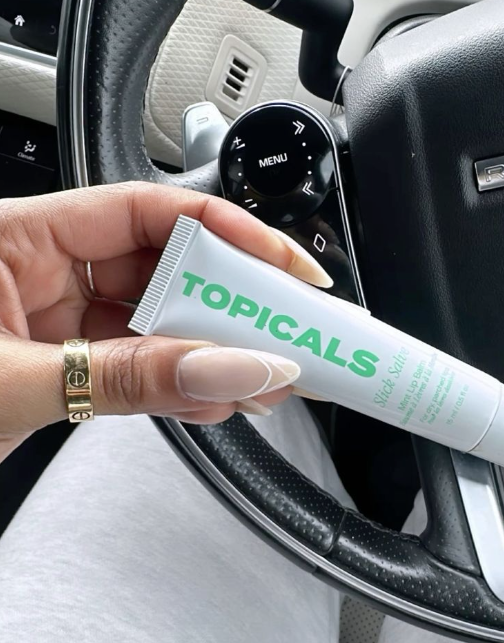Chicoro//Author of the Book Grow It!
What's the first thing we do when we see uneven ends? We trim right? Chicoro urges us to consider another alternative which is could help us in retaining more length in the long run. Chicoro claims that our longer strands could, in fact, be lead hairs that grew faster than the rest of your strands. That's why she came up with a "goal-point" method which involves looking at your longest section of hair and creating a goal of growing the rest of your hair to that point (instead of trimming that section to become even with the rest of the hair). Lead hairs should be no longer than 2 to 4 inches longer than the bulk of your hair to allow the opportunity for the rest of our hair to catch up.
I don't know about you, but I trim my hair somewhat often. I think the left side of my hair seems to always be longer than my right. And every time I do trim, months later, my hair appears uneven again. Then, I've got to trim again and the viscous cycle continues. So I have to ask myself, "is this uneven growth or damage?"
The answer to this question means everything and could make the difference between increased length retention or further damage. If the lead theory holds true, then as we should ultimately be retaining length as we wait for the shorter (bulk) of the hair to catch up to the goal point. Once we get to the goal-point, we may trim as desired for aesthetic reasons. Remember, even when the most of the hair reaches the goal point, there may still be strands that are longer in length. That's when you decide if you want to trim to create the even look.
LHCF Member who shared her experience with "lead hairs"
If you are going to test this theory out, here are my suggestions:
- First step is to shift your focus towards managing your breakage as much as possible. I noticed that natural haired ladies tend to fare well in trying out the lead hairs method because their have minimal breakage. We must work fervently to maintain the moisture, protein balance and impact breakage as much as we can. If not, then our hair will succumb to further damage and we may end up losing length instead of reaching our goal point. (I've been there before....not fun).
- Once breakage is under control, you will have to further preserve your lengths by taking measures to protect your ends. This ensures that, as the hair grows, you can hold on to your progress and enjoy the fruits of your labor.
- Take pictures and pay close attention to what your hair is doing. Most of the Lead Hairs testimonies I heard online were shared by women who closely observed their hair. This is how they came to the conclusion that one section was growing faster, not breaking off. If you blindly go into this process without close monitoring, you run the risk of possibly losing length. Pictures help you see if you are actually making progress.
- Trim if needed. There are two main scenarios that create the need for trimming. One is for appearance, the other is for damage control. Realize when it's necessary for damage control and don't be afraid to take action.
- Wear your hair in styles that preserve the long lengths while you wait for the rest to "catch up." I like to wear curly styles, buns, and updo's that camouflage the uneven lengths so that you're not tempted to trim (and you don't lose inches due to the hair chipping away).
Other links discussing lead hairs:
Curly Nikki
LongHairCareForum








You have no idea how much I needed this post to happen! I have lead hairs! The ends aren't damaged and I felt no need to cut them but it makes things difficult because that one area grows so fast. Thanks for this!
ReplyDeleteI've never heard of "lead hairs," but it makes sense. I've trimmed my hair to even it up because it grows faster on the sides only to have it grow right back. The ends aren't damaged either. Thanks for sharing!
ReplyDeleteI have this issue... my nape end since I cut into a bob in 2009 it's grown so slowly.. and I have spent the last couple years chopping the longer length to catch up with the middle section.
ReplyDeleteThey are now the same length after my September trim but I know for a fact the other sides will grow quicker than the middle. So I will work on this goal point method.
Thanks for sharing
Maureen
www.myeverydaytreats.blogspot.com
I was just raving about the fact that the back of my hair finally caught with the fast growing middle and front. Then I saw this post and I'm proud to say that my method of playing catch up was similar to the writer's. Yeeeeehhh!!!! Thanks for the confirmation that I did something right with my hair for once.
ReplyDelete